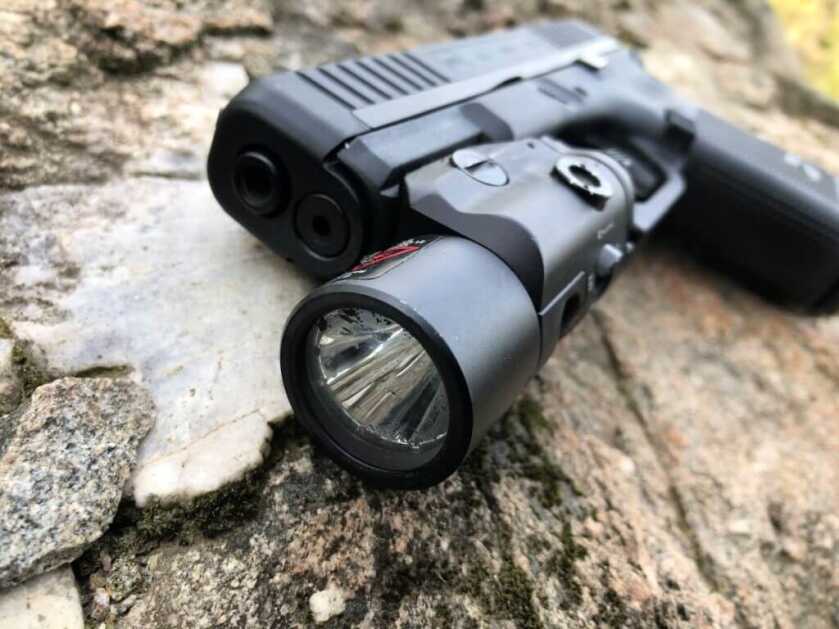
When it comes to getting into Night Vision, most everything is expensive and you need quite a bit to just get into the game. Streamlight has a great offering that gets you in at a decent price while giving you a lot of capability. I’m talking about the VIR II Weapon Light.
The VIR II (Visible/Infrared) light is the second generation of the VIR. (The distinction is important and we’ll touch more on that later.) The light is designed to attach to the accessory rail of a pistol or most any 1913 rail on any firearm. As the name implies, it works in both the visible and infrared spectrum. Producing white light, or in the infrared spectrum, IR light as well as an IR Laser.
The weapon light is activated by a switch at the rear of the unit. It can be rocked in one direction to turn it on momentarily, or the opposite direction in which it will stay on. This lets you quickly get a snapshot of a dark space, or keep the light “constant on” depending on the situation.

A switch on the bottom of the unit is used for moving between the visible light setting, off and infrared setting. This allows the light to be locked out, preventing any white or IR light negligent discharges or accidental activation while in storage or transportation.
The VIR II puts out 300 lumens and 5000 candela of white light. Powered by a single CR123 battery, the approximate run time is 1.5 hours. While the light doesn’t throw as far as some pistol mounted lights, it has a wide splash with almost no hot spot in the center of the beam.
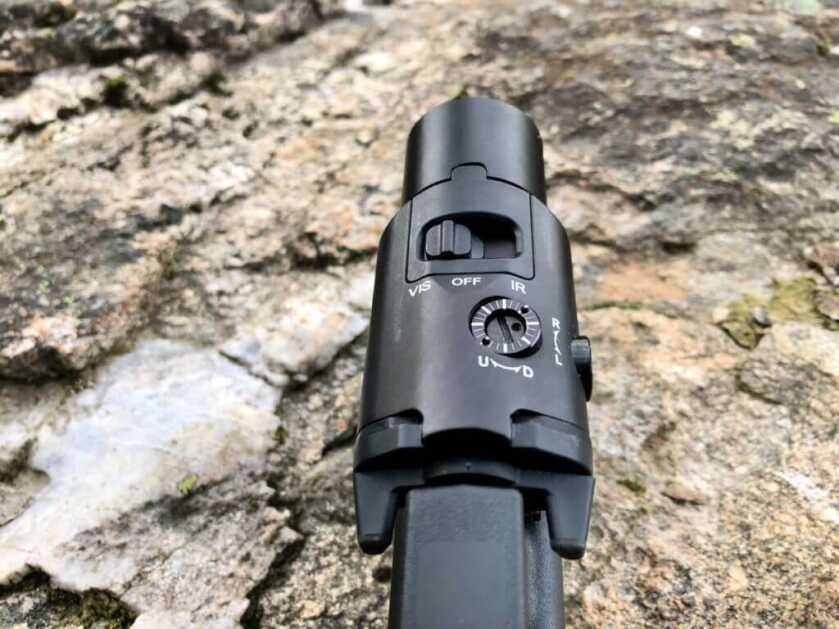
On the Infrared side, the IR light and IR Laser are both activated together. The IR light puts out 850nm at 600mW/sr. What does that mean? Under night vision, roughly the same output as the light puts out in the visible spectrum, in my experience. It also at the same time energizes its 850nm laser with approximately 0.7mW of power, keeping it a Class 1 eye-safe laser. Operating in the IR spectrum, the light will run approximately 12 hours on the single CR123 battery.
The laser is adjusted with windage and elevation adjustments on the side and bottom of the light body. The housing is marked with 3 MRAD adjustment markings and can be adjusted using a small flat head screwdriver. As a quick aside, zeroing the laser can be made much easier if you have an optic mounted on your pistol. Otherwise, bring some patience.
One thing of note on the laser is the location. It is actually inside the light head, rather than located below the bezel like the previous VIR model. This puts your laser closer in line to the bore of your pistol, in turn, giving you less of an offset. This can be very helpful in making low-probability shots while utilizing your laser.

The unit measures approximately 3.3 inches and weighs 3.82 ounces. The housing comes in black or a coyote color. Unfortunately replacing the battery requires the removal of the unit and in turn confirmation at best, or re-zeroing at worst. On the upside, it shares the same footprint as the Streamlight TLR-1. This is very handy when it comes to finding holsters for this light, as the TLR-1 is well supported by most major holster manufacturers.
Having said all of that, how have I used it and how has it done for me? My initial use was somewhat outside of its original design. I actually used it on a Hi-Point Carbine during a 3 Day Night Vision Course with AMTAC Shooting. I had it positioned on a section of pic-rail at 6 o’clock and activated it with my support hand. It did surprisingly well set up like this.
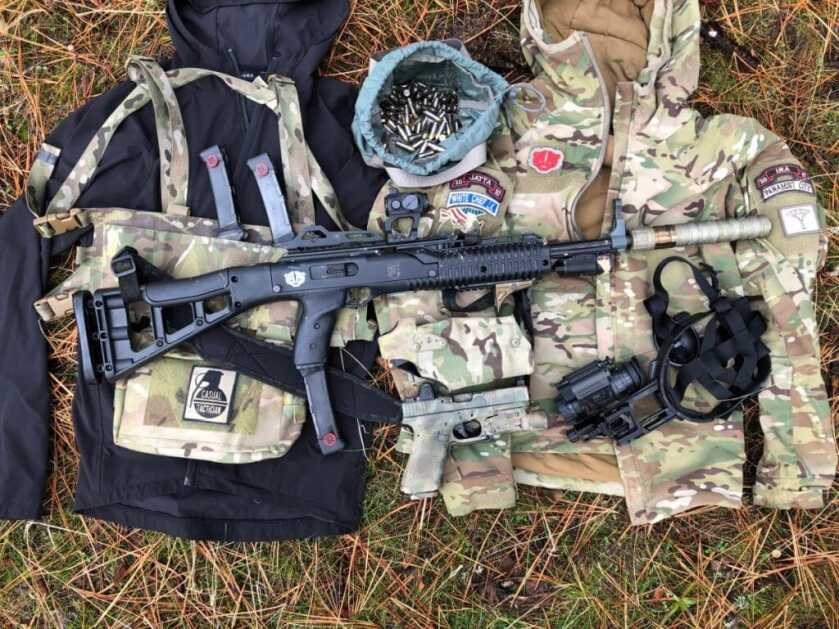
I could easily activate the white light as the class progressed into the evening hours, and then when we switched to NODs (Night Observation Device), I could switch over to the Infrared spectrum with the combined light and laser.
After that I used it again, this time mounted on my Glock 17, during a 1 Day Introduction to Night Vision Course by Cuyval Dar Inc. Once again, using the white light feature moving into the evening and the IR side under NODs.
During both courses, the VIR II did a great job. In use, either on the flat range at about 50 yards or so, or while clearing structures in CQB, I found the white light and IR light and laser to perform well.
Is the light as bright as other pistol mounted lights? No, it is not. Below are some comparisons of the VIR II and a SureFire X300 Ultra at 10, 25, and 50 yards.





Do I think that puts the VIR II at a disadvantage? I guess it really depends on the application. What is your intended use and role for this light? Are you going to use it to largely increase the capability of defending your home or are you looking to use it for predator hunting?
For a home defense light, I think it is wonderful. It gives you both the capability of illuminating and identifying targets with the white light, or if you are using night vision, target ID’ing as well as aiming with the IR light and laser. And doing so very effectively at realistic defensive distances, think 25 yards or so, the length of a long hallway.
However, if you are going to mount this on a gun for predator hunting, the throw of both the white light and IR light may leave something to be desired, since they don’t push out as far or have a hot spot for shooting predators at range.
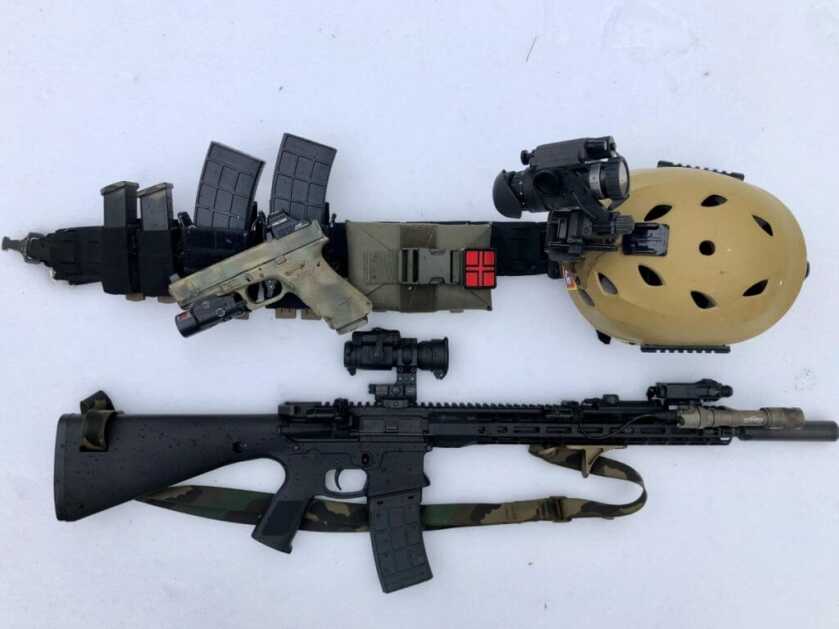
I do think the VIR II is probably the best bang for the buck when it comes to getting into Night Vision. You can make it your first purchase with respect to weapon mounted light/laser and use it on your primary (carbine) initially. And then as the budget allows, you can purchase a dedicated light/laser for your primary and move the VIR II to your pistol. Setting yourself up in the long run with a primary and secondary capable of illuminating and actively aiming in the Infrared spectrum. A very solid option. The VIR II can be purchased here for about $320.
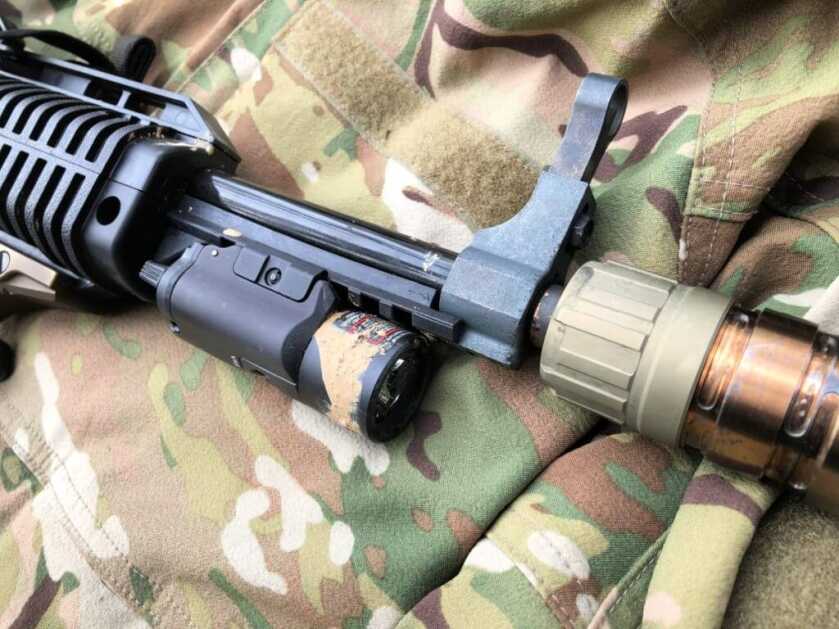
You can watch my Video Review of the VIR II here.

